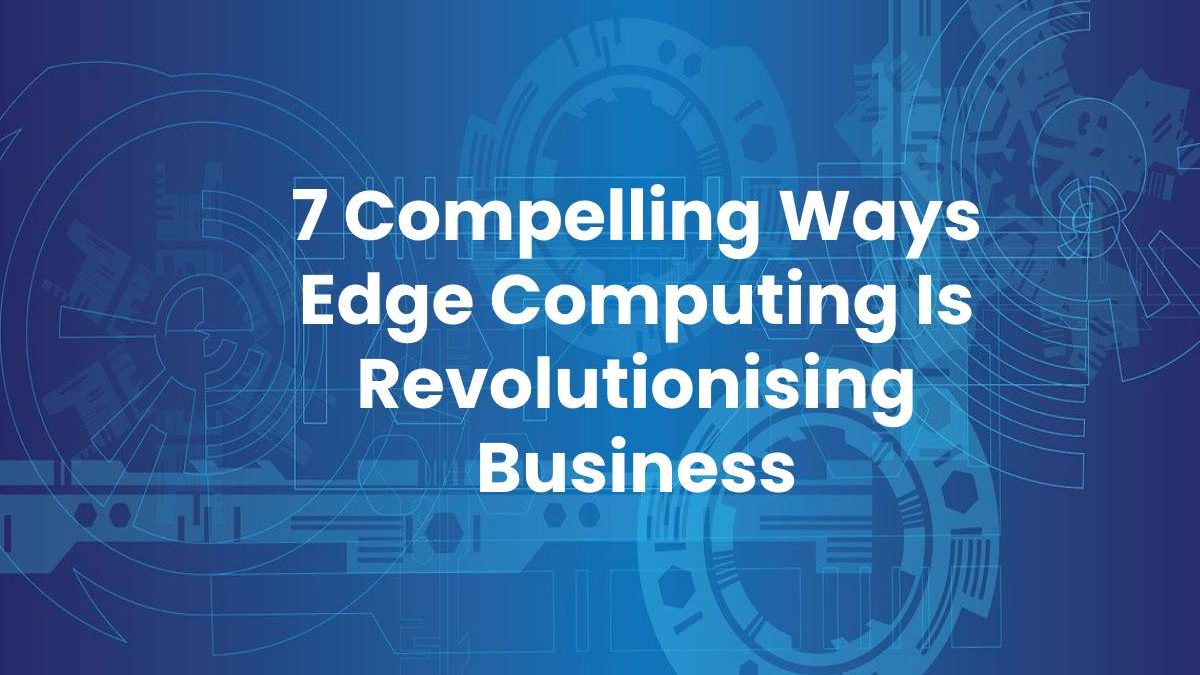Ways Edge Computing Is Revolutionising Business
Edge computing is a relatively new concept, yet businesses that have been among the first to embrace it have benefited in multiple ways. As the name suggests, the technology brings data storage as close as possible to the physical computer infrastructure that’s using it, therefore negating the need for data to travel long distances to and from the storage location.
For aspects such as IoT and those that require complex data analysis or transfer, the advantages of edge computing can be dramatic.
The following details 7 ways that edge computing is advancing a far-reaching and diverse range of industries.
- Retail benefits from real time, local analysis: In a marked change from traditional data analysis where everything is pulled together in a central location, edge computing allows stores to get real-time, local information at the touch of a button. This powerful knowledge allows retail marketeers to make better, faster decisions that are purely data-driven.
- Healthcare enjoys localised data management: Rather than relying on a central database, vital data – such as device performance – isn’t only analysed faster, but allows for a better-timed response, as well as increased security. This is just as impactful when applied to medical diagnosis and treatment, such as that from medical IoT devices. Without the need to send data to a central database and back again, response times fall, and diagnosis becomes faster. Add in aspects such as more advanced wearable devices and their acceptance and use by the public and the implications for the medical profession are truly profound.
- Improving the manufacturing process: Having virtually real-time data right on the factory floor allows the manufacturing industry to streamline operational efficiency. This, in turn, positively impacts margins and can greatly assist in the reduction of line shutdowns.
- Improving Augmented Reality: Edge computing accelerates the capabilities for AR, thanks to allowing levels of user engagement on local devices to increase dramatically. Not only will this create faster, more vivid AR experiences, but companies who take full advantage of this at the earliest opportunity will be dramatically ahead of their competitors.
- Enhanced data analytics: Locally driven edge data capture can introduce more advanced AI earlier in the analytical process. This leads to faster, more accurate data than is typically seen with cloud driven data, where more advanced intelligence is only introduced at a later point in the process.
- Streamlining security systems: Especially relevant to companies with large and/or complex security needs, edge computing can provide an initial analysis of data received (such as that from motion-detection cameras). This will then determine whether or not the capture needs to be stored in the cloud. This greatly removes the bandwidth necessary as it removes the constant streaming of information from site to the cloud server.
- Reducing data accumulation: As tech advances, so the amount of data collected increases. Most of this will never be needed yet is taking up cloud storage. Edge computing initial analysis means that only valuable intel is sent to the cloud, so reducing much of the associated expenses of massive data storage.
These are specific examples of how edge computing is set to revolutionise virtually every industry. Once the basic premise is understood and applied to a particular business model, some of the key advantages can be determined as:
- Dynamic reactivity to market conditions
- Reducing operating expenses
- Decreasing storage needs
- Real-time data collection
- Increased security for privacy-sensitive applications
- Faster data processing (thanks to reduced latency)
Quite simply, putting data closer to the end user allows it to be used faster and in a more efficient manner. Whether a company uses the power of edge for data storage or computational advantage, the benefits are profound and, potentially, endless.
Zella DC have developed a unique micro data centre designed to simplify edge computing deployment. Over 10 years, the advantages have been welcomed in a variety of industries on six continents.
To find out more and discover how micro data centres are the storage of the future, visit www.zelladc.com
Angie Keeler
Angie Keeler is the CEO and co-founder of Zella DC.
Angie has over 10 years experience within the IT and micro data centre industry with practical hands-on experience bootstrapping a company and growing a business through sales and international distribution across six continents. As the CEO Angie has built and developed distribution channels and support systems across Australia and into both North and South America, Asia Pacific, Africa and the UK.
As a leader and innovator, Angie is well respected and held in high esteem by her peers and industry colleagues.
Related posts
Recent Posts
Best 2 Ways to Transfer WhatsApp from Android to iPhone, No Data Loss
In this guide, we’ll walk you through 2 different ways to switch WhatsApp from Android to iPhone within minutes. Best…
Scope of Pursuing Certificate Course in Strategic Management
Organizations need to use practical business methods in this rapidly changing business environment to achieve their organizational goals. Managers need…



